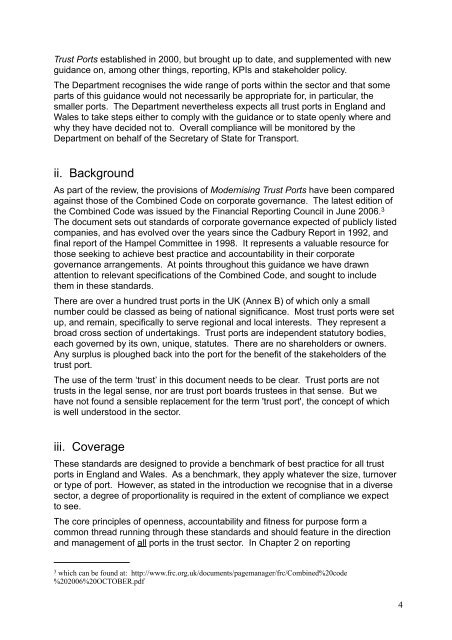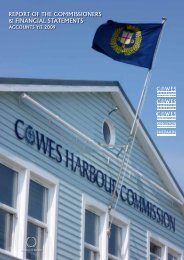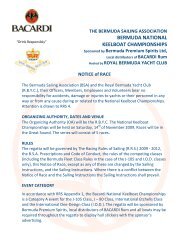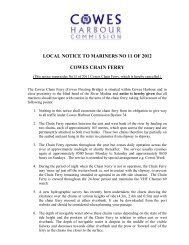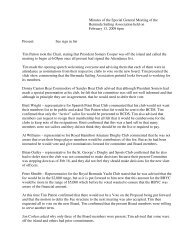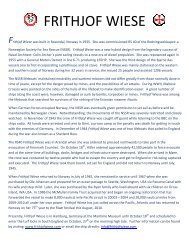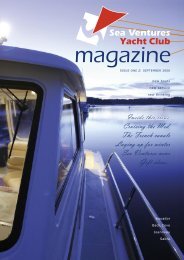Modernising Trust Ports 2nd Edition.pdf - SailingNetworks
Modernising Trust Ports 2nd Edition.pdf - SailingNetworks
Modernising Trust Ports 2nd Edition.pdf - SailingNetworks
You also want an ePaper? Increase the reach of your titles
YUMPU automatically turns print PDFs into web optimized ePapers that Google loves.
<strong>Trust</strong> <strong>Ports</strong> established in 2000, but brought up to date, and supplemented with newguidance on, among other things, reporting, KPIs and stakeholder policy.The Department recognises the wide range of ports within the sector and that someparts of this guidance would not necessarily be appropriate for, in particular, thesmaller ports. The Department nevertheless expects all trust ports in England andWales to take steps either to comply with the guidance or to state openly where andwhy they have decided not to. Overall compliance will be monitored by theDepartment on behalf of the Secretary of State for Transport.ii. BackgroundAs part of the review, the provisions of <strong>Modernising</strong> <strong>Trust</strong> <strong>Ports</strong> have been comparedagainst those of the Combined Code on corporate governance. The latest edition ofthe Combined Code was issued by the Financial Reporting Council in June 2006. 3The document sets out standards of corporate governance expected of publicly listedcompanies, and has evolved over the years since the Cadbury Report in 1992, andfinal report of the Hampel Committee in 1998. It represents a valuable resource forthose seeking to achieve best practice and accountability in their corporategovernance arrangements. At points throughout this guidance we have drawnattention to relevant specifications of the Combined Code, and sought to includethem in these standards.There are over a hundred trust ports in the UK (Annex B) of which only a smallnumber could be classed as being of national significance. Most trust ports were setup, and remain, specifically to serve regional and local interests. They represent abroad cross section of undertakings. <strong>Trust</strong> ports are independent statutory bodies,each governed by its own, unique, statutes. There are no shareholders or owners.Any surplus is ploughed back into the port for the benefit of the stakeholders of thetrust port.The use of the term ‘trust’ in this document needs to be clear. <strong>Trust</strong> ports are nottrusts in the legal sense, nor are trust port boards trustees in that sense. But wehave not found a sensible replacement for the term 'trust port', the concept of whichis well understood in the sector.iii. CoverageThese standards are designed to provide a benchmark of best practice for all trustports in England and Wales. As a benchmark, they apply whatever the size, turnoveror type of port. However, as stated in the introduction we recognise that in a diversesector, a degree of proportionality is required in the extent of compliance we expectto see.The core principles of openness, accountability and fitness for purpose form acommon thread running through these standards and should feature in the directionand management of all ports in the trust sector. In Chapter 2 on reporting3which can be found at: http://www.frc.org.uk/documents/pagemanager/frc/Combined%20code%202006%20OCTOBER.<strong>pdf</strong>4


